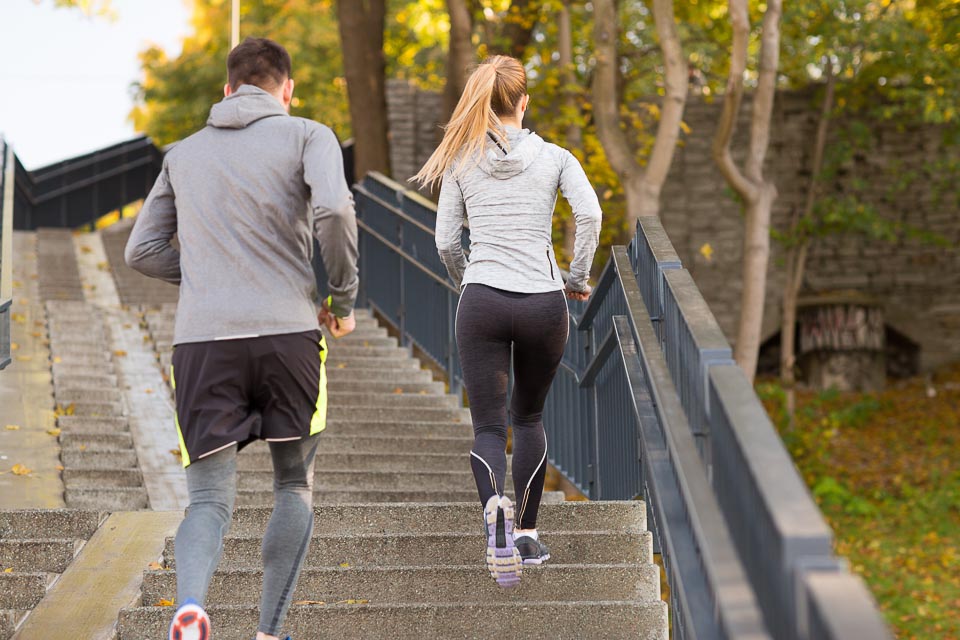There’s no denying that training and racing a vertical marathon are hard. They’re physically challenging and mentally demanding. Your mind is occupied with anxiety, your body is stressed and strained. You are likely not aware of how your actions are affecting the people around you.
Before heading out for a stairs training session or a vertical marathon race, it’s useful to observe the right etiquette of stairs climbing.
1. Don’t make loud noises.
Whether you’re climbing the enclosed stairs in buildings, resting at lift lobbies, or conquering outdoor stairs at the park, keep the volume to the minimum to avoid causing disturbance to other people.
If you can’t live without music, consider wearing a headphone instead of blasting your songs right from the music player or mobile phone. If you’re climbing with your pals, don’t get carried away with the excitement and lose control of your conversation’s volume.

2. Don’t litter.
Sure, you need to consume those energy gels or salt sticks during your climb. True, there isn’t any rubbish bin near the stairs. But that doesn’t mean it is alright to litter in public places. If you have a litter, do dispose it at the appropriate location to avoid infestation of unwanted insects.
3. Be mindful of other climbers.
Sharing is caring. Whether you’re a fast or slow climber, move to the side of the staircase in order to let other people overtake you easily. If there’s a big group of climbers behind you overtaking you one by one, it might be the best to give way by standing at the corner of the stairs landing.
When climbing with a buddy or a group of friends, don’t climb side by side and block the whole width of the stairs. Chances are, faster climbers are on their way.
If you notice someone in pain or giddiness, pause your training and approach them to find out if they’re okay. If they’re not okay, assist him or her outside the stairwell to the place with more fresh air, bring the issue to marshals (if you’re in a race) or call the emergency hotline.

4. Be considerate of users of residential or commercial buildings.
This is probably one of the most overlooked aspects of stairs training in buildings. While residents and office workers rarely use staircases nowadays, it doesn’t mean that stairs climbers don’t affect the users of residential and commercial buildings. Remember how climbers like to use the lift to go down to the first level? During peak hours, building users might pull their hairs when they’re unable to use the lift as it is too busy serving climbers.
Therefore, it is recommended for stairs climbers to train during off-peak hours to avoid creating the nuisance to building users. By doing so, stairs climbers gain the additional advantage of being able to train in a quiet and almost-empty stairwell. Typically, peak hours to avoid are morning rush hours (7 to 9 a.m.), lunchtime (12 noon to 2 p.m.) and evening rush hours (5:30 to 8 p.m.).
5. Notify the building security or someone about your location
Vertical climbing is a strenuous exercise. It would be better to notify someone about your whereabouts and approximately the time you will spend at the staircase so they can try to keep a lookout for you should any emergency happen to you.
6. Find alternative places to train if the popular training spots get too crowded.
For your sanity, if you see more than 10 climbers training in a building, it’s probably better for you to find alternative places or ways to train for vertical marathon. Here are a few suggestions:
- Low-rise buildings. In fact, Suzy Walsham suggested that your training includes 10 floors of vertical sprints followed by rest. So, a 10-storey building is good enough for beginners.
- Outdoor stairs. You get to see more when you climb outdoor stairs than indoor ones.
- Train your quads, glutes, calf as well as upper body muscles by hitting the gym. Include in your gym regime: stair climbing machine, elliptical machine, squats, lunges, push-ups, planks and weightlifting.
- Uphill sprints build your legs and lung power.
- Interval runs. Don’t underestimate the benefit of running when you train for a vertical marathon. Interval run can help strengthen your cardiovascular system.
Do you think most stairs climbers are aware of the common etiquettes in the vertical training? Do you have more suggestions of stairs climbers’ etiquettes?
We recently received feedback from residents about the inconvenience and nuisance caused by the some climbers at Toa Payoh Central; Blk 79A-E. There are other more than 30 storeys high rise HDB flats in Singapore, so please consider other blocks for your training too, and follow all these etiquettes to create a conducive environment for all users.





